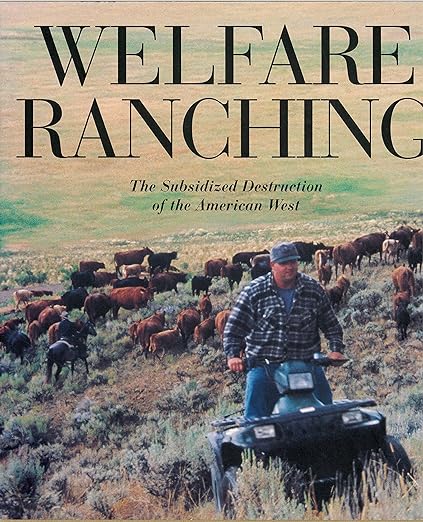livestock
-
The Upper Green River headwaters are in the Wind River Range. Photo by George Wuerthner The 170,000-acre Upper Green River Allotment, located on the Bridger-Teton National Forest in Wyoming, is the largest grazing allotment under Forest Service administration. It is also one of the best wildlife habitats in the West, and it is easily comparable…
-
If you missed yesterday’s showing of Desert Trout about Lahontan Cutthroat Trout, it’s now available to watch at any time on the Desert Trout page. You can view the film directly on YouTube here. Be sure to take it full screen.
-
All indications are that Green House Gas (GHG) emissions are causing higher global temperatures and climate change. Records show that 2024 was the warmest year on record. Climate change is increasing natural hazards, from hurricanes to wildfires. The Arctic permafrost is melting, emitting methane, a Greenhouse Gas (GHG) that is even more effective at trapping…
-
The Aspen Decline What will our forests in the west be like in fall without those golden yellow leaves shining in the sun? Aspen forests in the Intermountain West support levels of biodiversity only exceeded by riparian (stream) communities. In this time of Climate Breakdown, aspen have been declining due to drought and temperature stress,…
-
The Comb Wash allotment and the adjacent Cottonwood allotment within what, at the time of this writing, is still within the Bear’s Ears National Monument features prominently within the annals of litigation against the abuses of livestock grazing on our public lands. For decades after the passage of The National Environmental Policy Act (NEPA) the…
-
INTRODUCTION Throughout this report, I will refer to livestock grazing and production. The inclusion of production is critical because many livestock operations’ impacts involve more than cattle grazing grasslands. For instance, predator control is one consequence of livestock production, as is the production of forage crops such as alfalfa, which does not directly affect grasslands.…
-
The seminal work on public lands livestock grazing and its web of impacts, Welfare Ranching – The Subsidized Destruction of the American West is now available for download.
-
Grayling possess a large dorsal fin, and depend on cold, clear water for survival. Photo George Wuerthner In 1991, I, with the help of Jasper Carlton at the Biodiversity Legal Foundation, petitioned the U.S. Fish and Wildlife Service (FWS) to list the Arctic Grayling (sometimes called Montana Grayling) under the Endangered Species Act. My petition…







